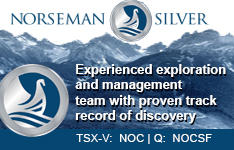Panbela Therapeutics Inc.'s (PBLA:NASDAQ) two polyamine inhibitors, ivospemin (SBP-101) and difluoromethylornithine (DFMO), were shown to inhibit multiple myeloma cells in vitro, a published analysis showed, Dr. Jonathan Aschoff, ROTH MKM analyst, reported in a December 4 research note.
"The data demonstrate that these agents as monotherapies have significant anti-cancer effects on multiple myeloma cell lines, which is increased when they are combined," Aschoff wrote.
4,067% Return Cited
Given the news, ROTH maintained its US$25 per share target price on Panbela, currently trading at about US$0.60 per share, noted Aschoff.
The difference between these prices implies a remarkable potential return for investors of 4,067%
The biopharma remains a Buy.
Assessments Conducted
Minnesota-based Panbela and the University of Texas MD Anderson Cancer Center evaluated the effects of SBP-101 and DFMO on the growth and viability of four multiple myeloma cell lines: NCI-H929, RPMI-8226, ARP-1, and MM.1S. After exposing these to varying doses of the polyamine inhibitors individually and in combination, the researchers measured the effects on cell proliferation, cell viability, and the induction of apoptosis, or cell death. The doses used were based on clinical results of trials evaluating these compounds in other malignancies.
The resulting data were published in the November supplemental issue of Blood.
The objective was to determine if intervening at the polyamine synthesis stage would be effective as a multiple myeloma treatment. Investigating this approach is worthwhile because the proto-oncogene MYC, a significant cause of this cancer, influences the polyamine pathway and is tough to target directly.
Findings are Positive
The analysis revealed that both of Panbela's polyamine inhibitors decreased proliferation of cells in all four lines, Aschoff reported.
Specifically, as for SBP-101, one of the biopharma's lead assets, test results showed that increasing concentrations of it, from 1−10 micrometers (1−10 µM), significantly reduced cellular proliferation in all cell lines. The average percentages of cytotoxicity observed with SBP-101 10 µM were 84% in ARP-1, 69% in NCI-H929, 49% in MM.1S and 21% in RPMI-8226.
Regarding DFMO, increasing concentrations of it, from 1−100 µM, affected the cell lines as SBP-101 did. However, DFMO impacted RPMI-8226 the most versus ARP-1 with SBP-101. The percent of cell death resulting from DFMO 10 µM was 64% in RPMI-8226, 33% in NCI-H929, 28% in ARP-1, and 16% in MM.1S.
A combination of SBP-101 10µM and DFMO 100 µM completely stopped the growth of cells in all lines. Both monotherapy and combination therapy resulted in apoptosis.
Second Potential Approach
In other news, results of different research by Panbela and MD Anderson suggested that potential exists for a polyamine-targeted therapy in combination with CAR-T therapy.
| Want to be the first to know about interesting Biotechnology / Pharmaceuticals investment ideas? Sign up to receive the FREE Streetwise Reports' newsletter. | Subscribe |
Important Disclosures:
- Doresa Banning wrote this article for Streetwise Reports LLC and provides services to Streetwise Reports as an independent contractor.
- The article does not constitute investment advice. Each reader is encouraged to consult with his or her individual financial professional and any action a reader takes as a result of information presented here is his or her own responsibility. By opening this page, each reader accepts and agrees to Streetwise Reports' terms of use and full legal disclaimer. This article is not a solicitation for investment. Streetwise Reports does not render general or specific investment advice and the information on Streetwise Reports should not be considered a recommendation to buy or sell any security. Streetwise Reports does not endorse or recommend the business, products, services or securities of any company mentioned on Streetwise Reports.
For additional disclosures, please click here.
Disclosures for Roth MKM, Panbela Therapeutics Inc., December 4, 2023
Regulation Analyst Certification ("Reg AC"): The research analyst primarily responsible for the content of this report certifies the following under Reg AC: I hereby certify that all views expressed in this report accurately reflect my personal views about the subject company or companies and its or their securities. I also certify that no part of my compensation was, is or will be, directly or indirectly, related to the specific recommendations or views expressed in this report.
Disclosures: Within the last twelve months, ROTH Capital Partners, or an affiliate to ROTH Capital Partners, has received compensation for investment banking services from Panbela Therapeutics, Inc.. ROTH makes a market in shares of Panbela Therapeutics, Inc. and as such, buys and sells from customers on a principal basis.
ROTH Capital Partners, LLC expects to receive or intends to seek compensation for investment banking or other business relationships with the covered companies mentioned in this report in the next three months. The material, information and facts discussed in this report other than the information regarding ROTH Capital Partners, LLC and its affiliates, are from sources believed to be reliable, but are in no way guaranteed to be complete or accurate. This report should not be used as a complete analysis of the company, industry or security discussed in the report. Additional information is available upon request. This is not, however, an offer or solicitation of the securities discussed. Any opinions or estimates in this report are subject to change without notice. An investment in the stock may involve risks and uncertainties that could cause actual results to differ materially from the forward-looking statements. Additionally, an investment in the stock may involve a high degree of risk and may not be suitable for all investors. No part of this report may be reproduced in any form without the express written permission of ROTH. Copyright 2023. Member: FINRA/SIPC.




































